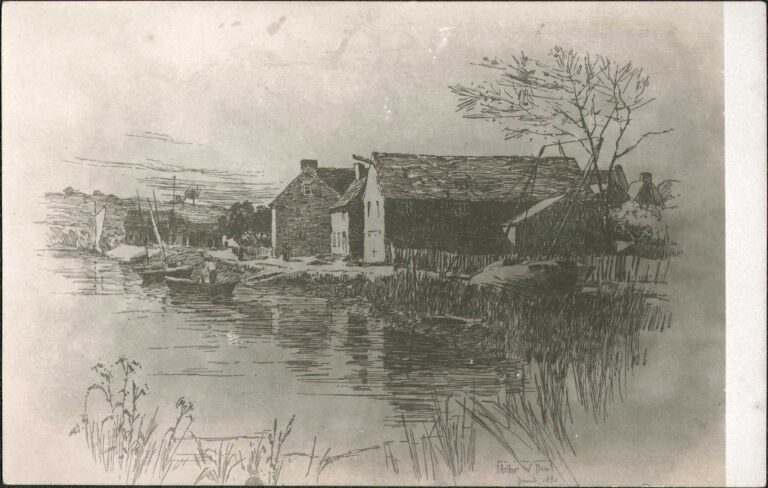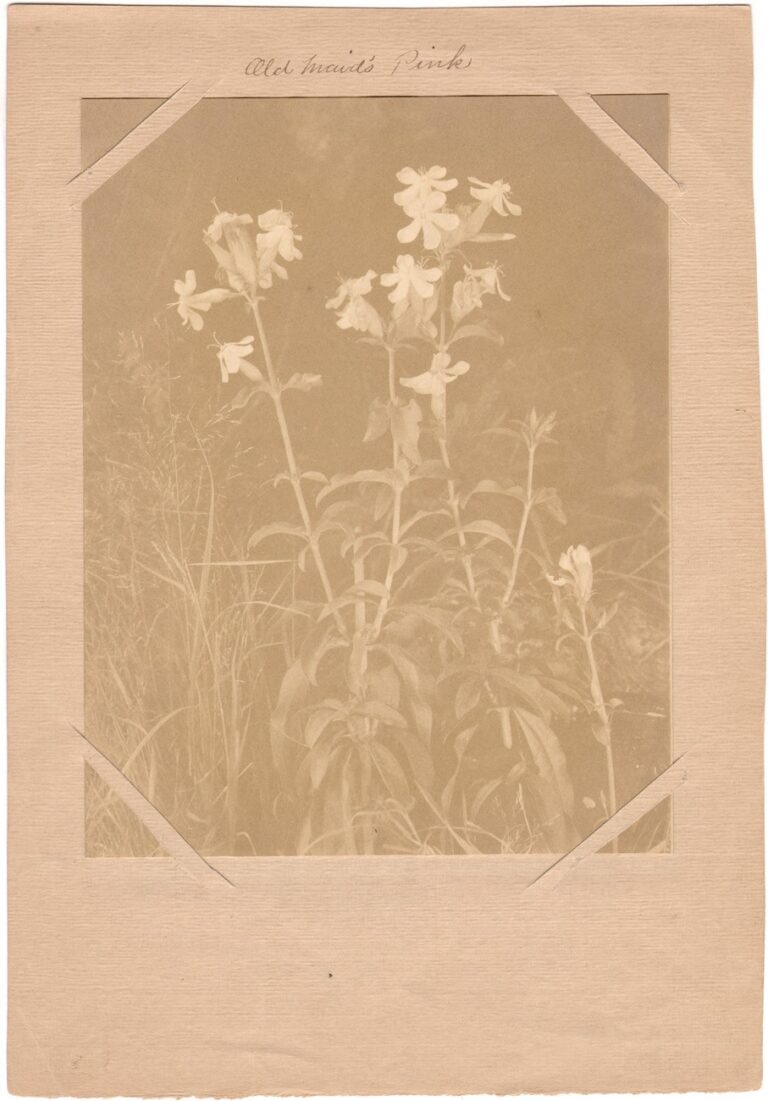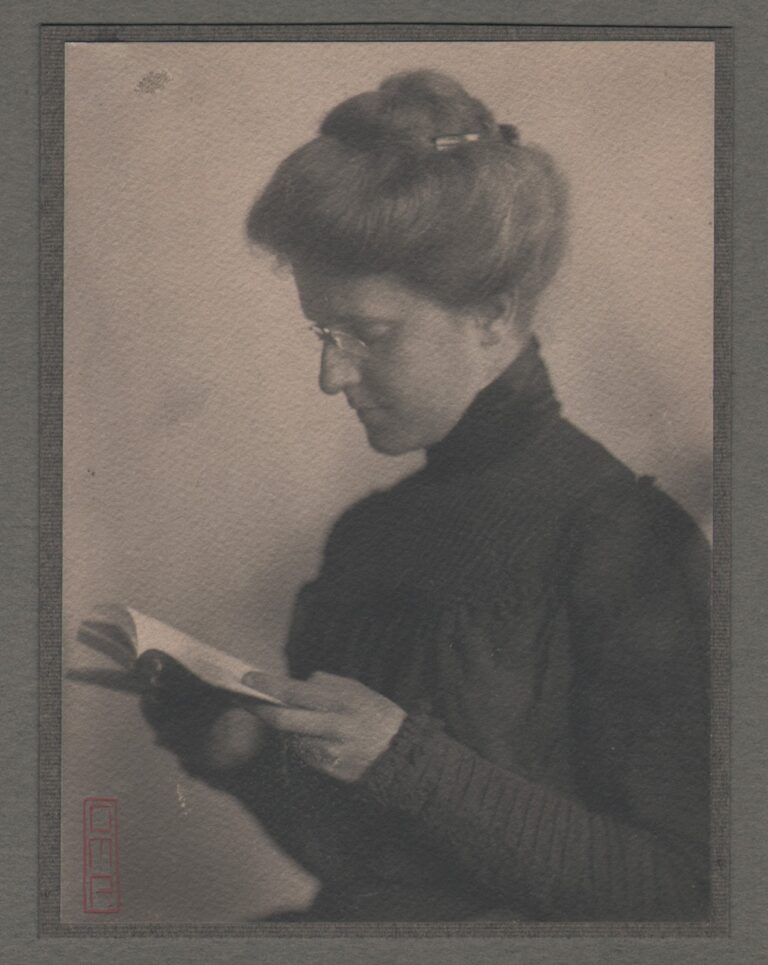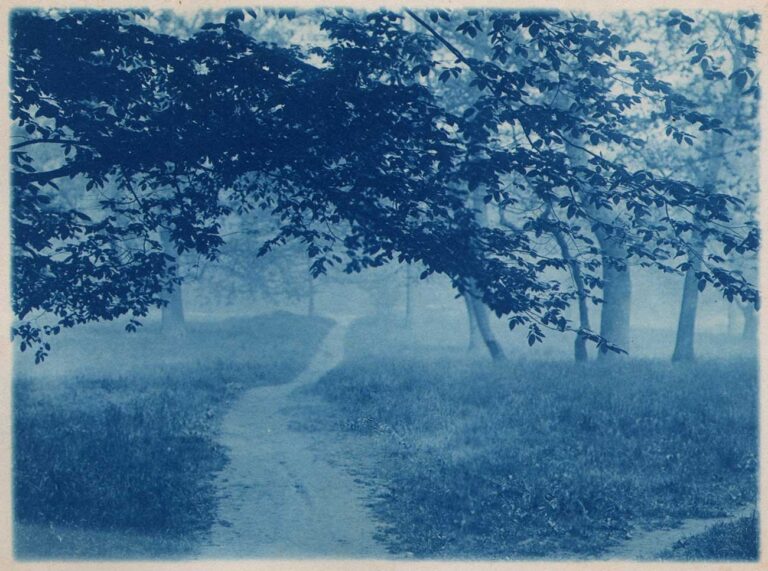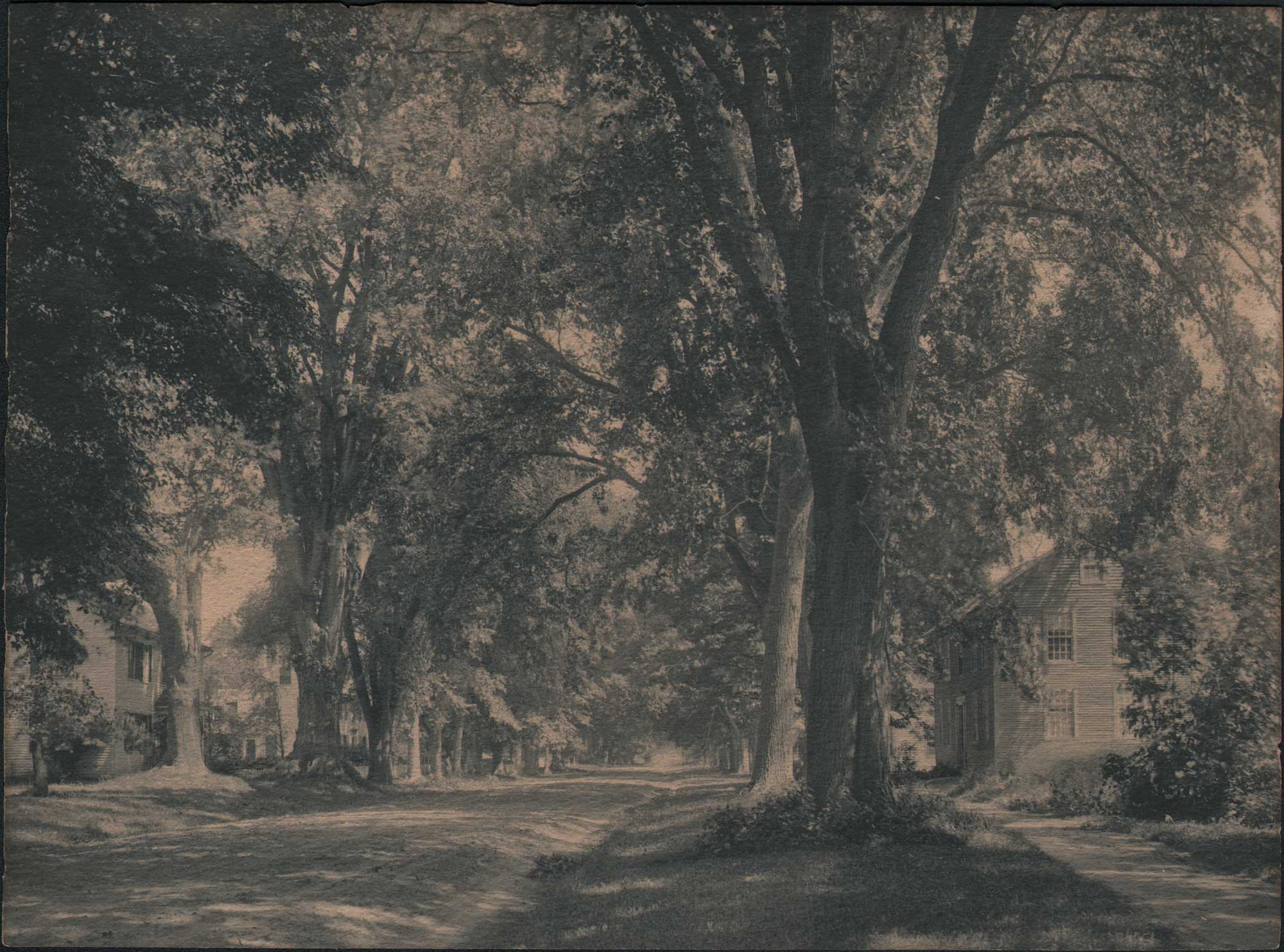
Deerfield Street: Childs House
This sun-dappled view shows what is now Old Main Street-then a dirt road- at the very outset of the 20th century in the Historic Deerfield village section of Deerfield, Massachusetts. Flanked by massive elm trees, now lost , the roadway back then was called “The Street”- then and now- with fine examples of American homes in the Federal and Colonial style on both sides. Today, many of these same homes are open for public tours: the view an homage and pictorial document to the Deerfield the Allen sisters loved and called home.
The Pink House: 92 Old Main Street: A History
The reference to Childs House in the title of this work is the colonial home seen at the right in the photograph. When the Allen sisters took this view around ca. 1900, the occupants were Samuel Childs IV: 1843-1906, and his wife, Mary Ann Vincent Childs: 1854-1938. The home in the present day has been owned by the trustees of Deerfield Academy since 1977.
Lot 35 was originally platted in the town of Deerfield on May 14, 1671. (5 acres, ½ rood, 20 rods, 16 cow commons) Its first owner was Samuel Hinsdale, said to be the towns first settler in 1670. Before he was subsequently killed in 1675 at the Battle of Bloody Brook, he had sold the property to John Allin (d. 1675- also killed in the battle). In a twist of fate, the only person to survive the battle- John Stebbins, (1646-1724) would then become the properties second owner. But fate intervened for him as well, with a home that may have existed on the lot or one built by his own hands, (he was a carpenter) destroyed in what became known as the Raid on Deerfield, on February 29, 1704. (1.)
During this “Deerfield Massacre”, Stebbins and his entire family were captured by French and Native American forces and marched to Canada along with other town survivors. He eventually returned to Deerfield with his wife and their son John Stebbins Jr. and rebuilt their home on the lot, which stayed several generations within the family until 1777.
Others would then own the home (which had been divided into two living spaces by the probate court when Stebbins Jr. died in 1760) afterwords, until 1797, when the lot and home were purchased by David Sheldon. (1770-1841) (2.)
The two-family home was derelict by the time Sheldon purchased it, and he went on to demolish and build a new home around c. 1798, which still stands today. In Family & Landscape , the authors comment on this new home: “The main house was designed with a center hall, but the ell was built around a center chimney. David Sheldon made use of the existing cellar as he extensively used old structural pieces which can be seen in the cellar. In addition, shadow molded paneling is visible in the; south entry of the ell and reused hardware and wide boards of an early period have been integrated into the house.” (3.)
The Sheldon family heirs would own the lot and home until 1897, when it was purchased by Samuel Childs IV. The home was in turn kept in the family by his surviving spouse: Mary Ann Vincent Childs, (1854-1938) until her death. The next owners were Wynn F. (1893-1950) and Sarah A. Rossiter (1893-1976) who: “attempted to modernize and restore the house, guided by their concept of a “colonial house.” (4.)
The next owner was Henry N. Flynt (1893-1970) in 1944, who “purchased the house from the Rossiters, removed the wood shingles and painted the clapboards pink. Henry Flynt had learned from Emma Coleman’s book that before the Rossiters, the house was a faded red or pink.”
In 1977, the home was sold to the trustees of Deerfield Academy, “which in 1989 remodeled the ell by raising much of it to a full two stories. The cellar was enlarged and a concrete floor was poured, thus destroying evidence of the plan of the early house.” (5.) (editors note: 6.)
Notes:
- General Overview, Lot 35: Family & Landscape: Deerfield Homelots from 1671, Susan McGowan & Amelia F. Miller, Pocumtuck Valley Memorial Association, Deerfield, MA, 1996, p. 169. As to the previous lot owner John Stebbins, a monument honoring him still stands today. Background: on August 22, 1911, during a field day of the Pocumtuck Valley Memorial Association, a granite marker was dedicated on this former homesite to John Stebbins, “soldier under Captain (Thomas) Lothrop at Bloody Brook, 1675- the only man who escaped unharmed from the Bloody Brook massacre and home that stood on the spot was set ablaze and destroyed in the Deerfield massacre of 1704.” The monument was first placed in 1910: “This Marks the Home Lot Where John Stebbins, grandson of Rowland the Emigrant, a Permanent settler of 1682, Lived and Died.” See also John Stebbins family tree. (Geneanet online resource, accessed July, 2025.)
- Ibid: p. 169
- Ibid: p. 171. An interesting survivor: an 1855 Deerfield Main St. lot map shows lot 35 printed with David Sheldon’s surviving spouse- “Mrs. A. Sheldon”: Abigail Clesson Sheldon: 1785-1855.
- Ibid: p. 171: footnote #9 in Family & Landscape states: “Sheldon first reported on the color of the house “Mrs. Sylvia Munn remembered it as being painted red.” (vol.) 1: p. 624. Emma Coleman wrote about the house in her 1907 guidebook calling it the ‘pink house’ (which was red long ago).” (p. 173)
- Ibid: p. 171
- Editors Note: thanks to the 1996 publication of the definitive volume Family & Landscape: Deerfield Homelots from 1671, the historical record has been corrected for Deerfield homelot #35, known in the present as the “Pink House”, or David Sheldon house. One takeaway: the book’s authors correct the record that lives on today in secondary published sources: Deerfield town historian George Sheldon falsely stated for his 1885 volume History of Deerfield, with Genealogies, that (Col.) David Field (1.) (1712-92) “owned it 1754-1785”, and that “The house was built by David Field”. (as it turned out, Field owned a house and store on adjoining lot #34) From A Historic and Present Day Guide To Old Deerfield, Emma Lewis Coleman, Boston, 1907, p. 61. David Field “was perhaps Deerfield’s leading patriot in the Revolution. He was Chairman of the Committee of Correspondence and Safety, and delegate to the Provincial Congress (1775) and the Constitutional Convention (1779-80). His store was the gathering place for the Deerfield Whigs and the “Liberty Pole Planted here by the Patriots July 29, 1774,” as one reads on the boulder, placed in front of it.”
✻ ✻ ✻ ✻ ✻
Original copy for this entry posted to Facebook on September 24, 2012:
Old New England towns like Deerfield, Mass. are one of America’s treasures preserving historical architecture and worthy of a visit. Native sisters Mary and Frances Allen, who had lost their hearing before the end of the 19th century, were undeterred by their own handicaps and pursued the art of photography there, documenting neighbors and street scenes like this one that were in effect a love letter to the town itself.
